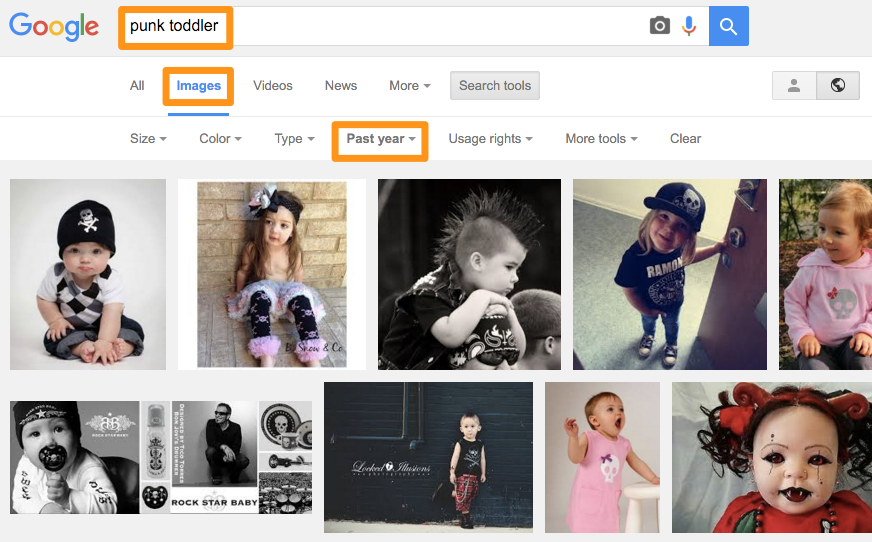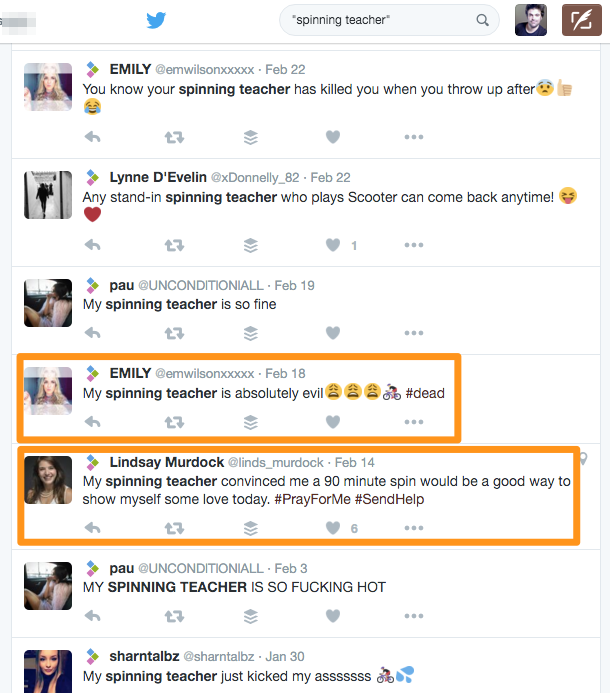The NFL recently announced that they’re going to start selling branded gear that celebrates “micro moments.”
"The excitement in every record or amazing play is there, but the half-life of each moment is so short, you have to do what you can to capture it," Chris Halpin, the league’s senior VP of consumer products, told ESPN.
But you don’t need to be at the helm of a multi-billion-dollar entertainment empire to start a business selling real-time products that your tribe will love. There’s a great deal that any ecommerce seller can learn from the micro-moments trend. And there are always trending memes that you can take advantage off.
When you really know your audience, it’s easy to come up with creative concepts that can be sold as product designs. Add to that a savvy automated workflow for advertising, integrated with content assets and email follow up, and you’ll be monetizing hot niches in no time.
Let’s take a look at a proven method for how to create a real-time, low-risk merchandising business. All it takes is shrewd business and merchandise planning, a healthy dose of gumption, and adherence to the step-by-step process outlined below.
Why This Process Works
When you use an on-demand printing service to sell branded merchandise, you’re essentially outsourcing inventory and fulfillment. This translates to much lower risk.
However, because sellers only need to upload image files to make a new product available with on-demand printing, there’s another key advantage—the ability to build a business around niche interests and “moments.”
All it takes is the right research. Using free tools, you can easily see how economically viable your ideas are, how many customers you can reach with ads and how much you’ll have to spend to do it. Plus, you’ll be able to see what their most important values and issues are, as well as what they’re likely to buy and wear—and, perhaps most importantly, what’s trending with them.
Free Webinar:
How to Quickly Start a T-Shirt Store
Learn how to sell t-shirts without worrying about design, inventory or shipping.
Step 1: Pick Your Niches
Get started by picking three niches that you’re already at least little familiar with. You can start with just one or cover your bets by experimenting with a handful of them at once.
These niches will be the starting points for you experiment with “real-time merch” campaigns.
If you score any big hits, you can refine your creative ideation and marketing strategies and iterate from there, each time experimenting with more merchandise concepts and new niches. If you don’t, then all you’ve lost is a few hours of research and setup.
It’s much easier to sell something to an existing community, or built on a current trend, than it is to try and reinvent the wheel. Think about the people you’d want to sell to. The options are fairly endless.
Here are some examples:
- Punk rock-loving parents of toddlers
- Fitness gurus who teach spinning
- Farmers who grow hothouse tomatoes
Note that because they include not one but two descriptive parameters, the above examples are all specific enough to be “communities,” but they’re broad enough to support viable demand. What tribes are you familiar with, or a member of, that you can tap into?
Step 2: Vet Your Niches for Monetization Viability
Now it’s time to make sure that the tribes you’ve chosen have the surface-level attributes that point to sales potential. You want to make sure your niche audiences hit on at least a couple of these points, and the more the better.
- How approachable is this community? Is this the type of crowd that would be open to a “feel good” product? Do they welcome outsiders? Are they proud of the things that unite them, making it possible that they’d want to share their related product purchases with their peers?
- Where does the tribe stand life cycle-wise? Is it growing? Will it be here to stay, or is it fleeting?
- Is the topic highly sharable? Do the values and interests of this tribe have broad enough appeal that the products which appeal to them have the potential to go viral, attracting customers from outside the core of the tribe itself?
- Is there a good enough chance that the audience wants to buy? Is the audience large enough? Loyal enough?
- Do the visuals associated with this community go well with multiple product types? Could you take that design and go beyond t-shirts to sweatshirts, smartphone cases, bags, mugs, mouse pads and more?
Use the Facebook Audience Insights (FAI) tool to break down your audience even more. This will give you key information about their average age, the ratios to men to women, other things they’re interested in and pages they’re likely to be fans of.
For a thorough, illustrated drill-down into making the most of FAI, check out the video below.
The more specific, the more focused the targeting, the greater chance you’ll later find a winning design and get customers to convert. If you already have a design, take time to define the audience.
Step 3: Hunt Down Inspiration
Put yourself in the audience’s shoes. Where would you be able to find someone wearing your t-shirt design? What kinds of people are they? Are they active in groups or clubs? Do they read specific books, magazines, and newspapers? Do they watch certain TV shows?
Get inside their heads, figuratively speaking, to make sure you’re designing a shirt they’d buy and wear.
Research your audience and get inspired about what they like, so you can craft an irresistible design and start marketing it to them.
Turn to Google, Pinterest, and Reddit as starting points. For instance, start with the broad interest, “dogs.”
You’ll find all kinds of sub-categories:
- Dog fanatics and activists
- Dog adoption services and information
- Puppies
- And plenty of breed specific options to run wild with
Now you’re ready to search for things those people would be interested in. Maybe there are clubs for owners of certain breeds, or clubs for those who participate in dog shows, that you can reference to better target your audience. As an example, you can read through this ecommerce case study of how our team launched a dog-focused t-shirt business in just a few days. Think about what makes your audience laugh, what gets them excited, what they are proud of, what the trending issues are in their niche and what they would wear.
Using our audience examples from above (punk rock-loving parents of toddlers, fitness gurus who teach spinning, and farmers who grow hothouse tomatoes), let’s take a look at a few resources for identifying real time trends that can be made into niche-optimized merch.
The easiest method, of course, is to perform a simple Google Images search, refined to return only recent results. In this case, I set the date range to be the past year, but if I was searching in a niche that had a higher volume of activity, I could change this parameter to be from the past week or even less.

Plenty of great ideas here that you can use as springboards for your own creative concepts and visual merchandising.
Another great option is Twitter search, which will display the top tweets for your keyword.

In this example, we can see some clever quips from students that could easily be tweaked to reflect pride among teachers. “Yes, all spinning instructors are this evil,” and “Show yourself some love – start spinning!”
Finally, Tumblr’s keyword search can be refined to display posts according to media type, so you can see just text, just links or just visuals if you want.

This item has solid engagement numbers and a charming phrase that may resonate with tomato horticulture enthusiasts.
Step 4: Creating Sellable Products
With your idea squared away, it’s time to get it designed and produced. Here too, you have several options.
A talent marketplace for inexpensive gig commissions, Fiverr’s t-shirt category is home to hundreds of designers who will gladly bring your concept to life for just a few dollars.
Alternatively, 99Designs, a crowdsourced design platform, takes a flat fee according to product type (tees go for $199). Once you’ve written a project description and your “contest” goes up, the community starts submitting designs. You then choose a few finalists and ask them to revise their mockups according to your taste. The winning designer gets the bounty, you get your design files, and everyone’s happy. If you don’t like any of the submissions from the crowd, 99Designs gives you your boney back.
Think you can do a better job yourself? Canva’s design tools are easy and mostly free. Just open an account, choose from stock images (or upload your own) and add text, icons and other elements.
There are many platforms for on-demand printing that make this merchandising process easy. Most print on demand companies support white-labeled shipping with no up front costs for sellers, and they have many product types including t-shirts, phone cases, beer steins, stickers, hoodies, posters and more.
If you're looking for a print on demand company to work with, Teelaunch, Printify, and Printful all integrate directly with Shopify.
Step 5: Advertising and Converting Traffic
Sure, for long-term business sustainability, you’ll need a comprehensive marketing plan and competitive analysis. But to experiment with moment-driven products for tribes, you can learn a lot with just a few dollars of ad spending and automated follow up.
Run a few social media ads to drive traffic to your storefront or t-shirt offer landing page. Use your merch designs as the ad creative, so as to set expectations for what happens upon clickthrough, and set the campaign’s targeting to reach those people that fit your audience definition above.
On Facebook, we recommend that you set the ad budget to display on the desktop news feed, mobile newsfeed, the desktop right column and the audience network. But also make sure to include a lead capture ad in your Facebook campaign, so you can send automated emails to people who express interest.
Consider adding other social platforms, if you know your audience spends time there as well. If you’re not sure—start with Facebook and branch out with small-scale experiments on other networks like niche forums, Twitter, Instagram, and Pinterest.
Step 6: Evaluate and Refine
Once your audiences have been exhausted with your ad impressions, which shouldn’t take more than two or three weeks, take a look at how your experiments performed. Some measurements to consider:
- Which tribes bought the most and why? Which bought the least and why? Could the specific communities you’re working with correlate with success?
- Where along the funnel were the biggest drop-offs? If you saw low ad clickthroughs, then your product creative might be the culprit. If your product pages didn’t convert, then it could be the description or layout turning people off—or maybe you’re failing to effectively leverage the real time tribal triggers. Did no one click on your remarketing emails? Maybe try introducing content-based email engagement into the mix, instead of just sales pitches.
- What else can you learn from your ad campaign analytics about your audience? Did you see better conversion performance at certain times of day, when seen by different devices or different targeting parameters?
The more time you spend examining these factors, the more insights you’ll gain, and the more you’ll be able to improve things over time. If your experiments yielded close to no sales, then it might be best to go back to step one and start over. But if you converted enough sales to justify continuing, then you’ve got plenty to try for drumming up even more business with more experiments.
Get in the Moments
By taking an audience-centric approach to product ideation, ecommerce sellers can use familiarity of niche communities to gain merchandising advantages. Agile product rollouts, possible thanks to the rise of on-demand printing and fulfillment services, make it easy to offer products that niche communities will love, with minimal overhead.
Start researching and get started leveraging your tribal connections for social ecommerce success today.

About The Author
Ben Jacobson is a marketing strategy consultant who specializes in content and social media. Active in this capacity since 2007, Ben has written extensively on marketing, engagement and media trends for publications including The Next Web, ClickZ, Search Engine Journal and Social Media Examiner. You can get in touch with him via LinkedIn or Twitter.
Merchandising FAQ
What does a merchandiser do?
What is an example of merchandising?
What does merchandise mean in retail?
What are merchandising skills?
Topics:
Join 446,005 entrepreneurs who already have a head start.
Get free online marketing tips and resources delivered directly to your inbox.
Thanks for subscribing
You’ll start receiving free tips and resources soon. In the meantime, start building your store with a free 14-day trial of Shopify.






